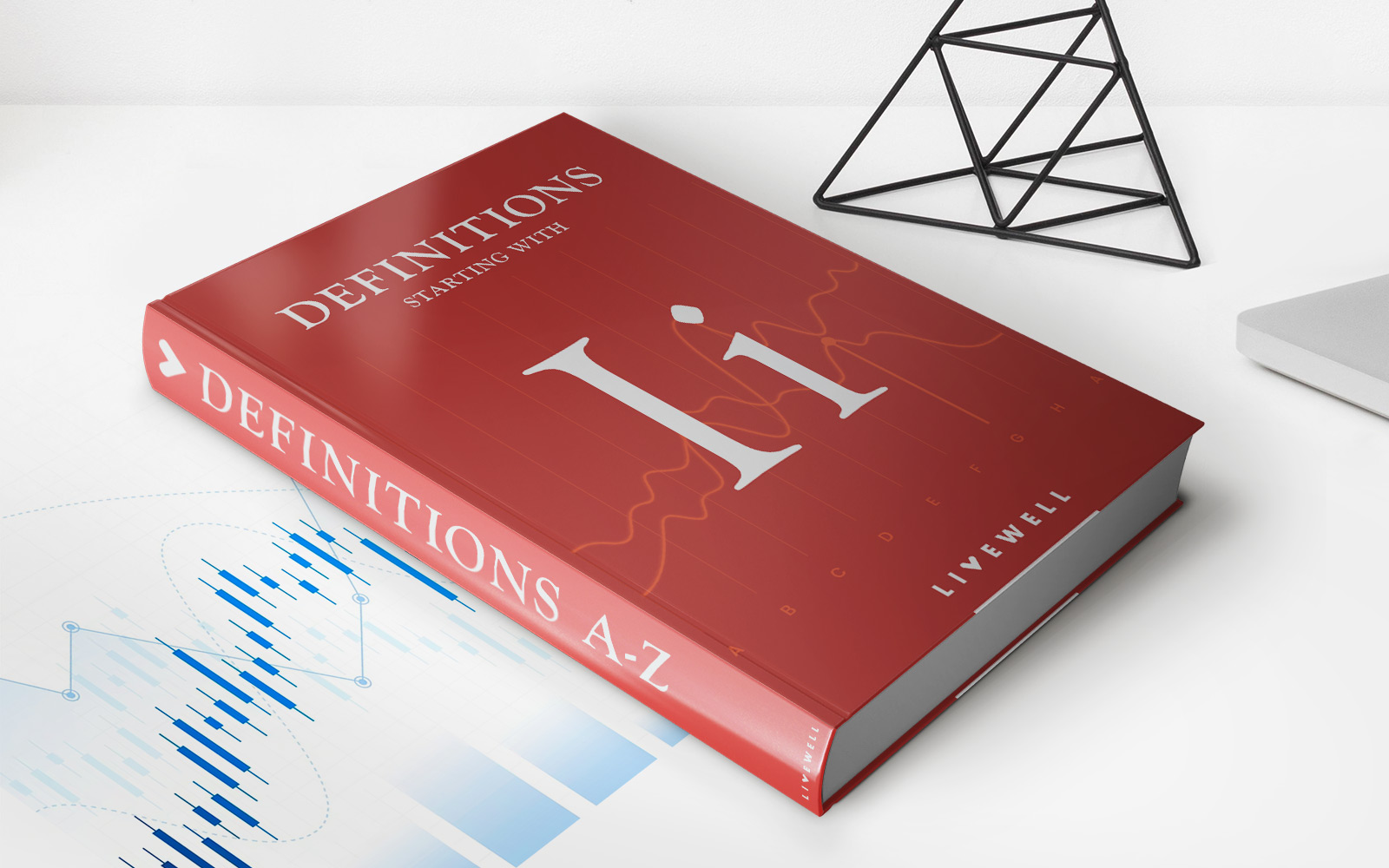

Finance
What Is Credit Life Insurance?
Modified: December 30, 2023
Learn all about credit life insurance, a type of insurance specifically designed to cover outstanding debts in the event of the policyholder's death. Secure your financial future with this essential form of finance protection.
(Many of the links in this article redirect to a specific reviewed product. Your purchase of these products through affiliate links helps to generate commission for LiveWell, at no extra cost. Learn more)
Table of Contents
Introduction
When individuals borrow money, whether it’s for a mortgage, car loan, or personal loan, they often take on an additional financial burden. This burden comes in the form of potential debt that may be left behind in the event of their untimely death. To address this concern, credit life insurance exists as a protective measure to ensure that loved ones are not burdened with outstanding loan payments.
Credit life insurance, also known as creditor insurance, is a type of insurance product designed to provide coverage for outstanding debt in the event of the borrower’s death. It acts as a safeguard for both the borrower and the lender, offering reassurance that the loan will be repaid even if the borrower passes away before fulfilling their financial obligation.
How does credit life insurance work? Essentially, when someone takes out a loan, they have the option to purchase credit life insurance alongside it. If the borrower dies during the term of the loan, the insurance policy will pay off the remaining balance to the lender, ensuring that the debt is not transferred to the deceased borrower’s family or estate.
Credit life insurance typically covers the outstanding balance of the loan, and the payout is usually made directly to the lender. The policy remains in effect for the duration of the loan, with the premium amount built into the regular loan payment. In some cases, the coverage may also extend to other unforeseen events, such as disability or critical illness, depending on the policy terms.
While credit life insurance offers certain benefits, it is important to consider its advantages and disadvantages before deciding whether to purchase it. It is crucial to understand the policy details, coverage limits, and any exclusions that may apply. Furthermore, exploring alternatives to credit life insurance is recommended in order to make an informed decision that aligns with one’s financial goals and circumstances.
In the following sections, we will delve deeper into the workings of credit life insurance, its coverage, advantages, disadvantages, factors to consider, and alternative options. By understanding this financial product, borrowers can make informed decisions about protecting their loved ones and managing their debt obligations.
Definition of Credit Life Insurance
Credit life insurance is a type of insurance policy that provides coverage for outstanding debt in the event of the borrower’s death. It acts as a safeguard for both the borrower and the lender, ensuring that the loan will be repaid even if the borrower passes away before fulfilling their financial obligation.
When someone takes out a loan, they have the option to purchase credit life insurance alongside it. This insurance policy is specific to the loan and covers the outstanding balance. In the unfortunate event of the borrower’s death, the insurance company will pay off the remaining loan balance directly to the lender.
Credit life insurance typically offers coverage for the duration of the loan, and the premium amount is incorporated into the regular loan payment. The exact terms and conditions may vary between insurance providers and loan agreements.
It is important to note that credit life insurance is not the same as traditional life insurance. Traditional life insurance provides broader coverage and can be used for any purpose, whereas credit life insurance is tied specifically to a loan and is intended to protect the lender’s and the borrower’s financial interests.
Furthermore, credit life insurance is often purchased at the time of obtaining the loan. This means that the borrower’s age, health, and other factors may impact the premium amount and eligibility for coverage. It is essential to carefully review the policy terms and any exclusions to ensure that the coverage meets the borrower’s needs and expectations.
In summary, credit life insurance is a specialized insurance product designed to protect both borrowers and lenders. By providing coverage for outstanding debt in the event of the borrower’s death, credit life insurance ensures that the loan will be repaid and that loved ones are not burdened with the financial responsibility.
How Credit Life Insurance Works
Credit life insurance works by providing coverage for outstanding debt in the event of the borrower’s death. Here’s a step-by-step breakdown of how credit life insurance typically works:
- Loan application: When applying for a loan, borrowers are often given the option to purchase credit life insurance. This is typically done at the time of loan origination.
- Premium calculation: The insurance provider calculates the premium amount based on various factors, including the borrower’s age, health, loan amount, and loan term. This premium is then added to the borrower’s loan payment.
- Policy activation: Once the borrower opts-in and pays the initial premium, the credit life insurance policy becomes active. The policy details, coverage limits, and exclusions are outlined in the policy documents.
- Loan repayment: As the borrower makes loan payments, a portion of the payment goes towards the principal and interest, while another portion goes towards the credit life insurance premium.
- Untimely death: In the unfortunate event of the borrower’s death during the loan term, the insurance company is notified of the claim. The process typically requires submission of necessary documentation, such as a death certificate.
- Payout to the lender: Once the claim is approved, the insurance company pays the remaining loan balance directly to the lender. This ensures that the debt is fully repaid, regardless of the borrower’s passing.
- Loan closure: With the payment from the insurance company, the loan is considered fully settled, and the borrower’s estate or family is relieved of any further financial responsibility.
It is important to note that credit life insurance is typically tied to a specific loan and does not cover other debts or financial obligations. The coverage is only applicable to the outstanding balance of the loan that the insurance policy is associated with.
Additionally, credit life insurance does not typically require a medical exam, but some policies may have certain exclusions, such as pre-existing conditions or suicide within a specific timeframe. Checking the policy terms and conditions is crucial to understanding the coverage and any limitations that may apply.
Overall, credit life insurance provides borrowers with peace of mind, ensuring that their loved ones or estate are not burdened with the outstanding loan balance in the event of their death.
Coverage and Benefits
Credit life insurance provides coverage for outstanding debt in the event of the borrower’s death. Here are the key aspects of coverage and the benefits it offers:
Coverage: Credit life insurance typically covers the outstanding balance of the loan. In the event of the borrower’s death, the insurance policy pays off the remaining loan amount directly to the lender. This ensures that the loan is fully repaid, relieving the borrower’s family or estate from any financial burden.
Death Benefit: The primary benefit of credit life insurance is the death benefit. If the borrower passes away during the loan term, the insurance company pays the remaining loan balance, allowing the estate or family to be free from the responsibility of repaying the debt.
Additional Coverage: Depending on the policy terms, credit life insurance may offer additional coverage beyond death. This may include coverage for disability, critical illness, or unemployment, depending on the specific insurance provider and policy. These additional coverages provide an added layer of protection for the borrower and may assist with loan payments in case of unforeseen circumstances.
Premiums: The premiums for credit life insurance are typically built into the regular loan payments. The premium amount is based on factors such as the borrower’s age, loan amount, loan term, and any additional coverage options chosen. It is important to note that premiums for credit life insurance are not always fixed and may vary over time, especially if the loan has a variable interest rate.
Protection for Loved Ones: Credit life insurance provides peace of mind and financial protection for the borrower’s loved ones. In the unfortunate event of the borrower’s death, the insurance payout helps ensure that the family is not burdened with the loan repayment and can maintain their financial security.
Safeguarding the Lender: Credit life insurance also benefits the lender. In the event of the borrower’s death, the lender is assured that the outstanding loan balance will be repaid, reducing their financial risk.
It is important to carefully review the policy terms and conditions to understand the specific coverage and benefits offered by the credit life insurance policy. Not all policies are the same, and it is crucial to choose one that aligns with your needs and provides the necessary protection.
Advantages of Credit Life Insurance
Credit life insurance offers several advantages for both borrowers and lenders. Here are some key benefits:
1. Financial Protection: One of the main advantages of credit life insurance is the financial protection it provides. In the event of the borrower’s death, the insurance policy pays off the outstanding loan balance, ensuring that the borrower’s family or estate is not burdened with the debt. This can provide peace of mind and alleviate financial stress during an already difficult time.
2. Ease of Access: Obtaining credit life insurance is often a straightforward process. It is typically offered at the time of taking out a loan, and the application process is often simple and uncomplicated. This ease of access means that borrowers can easily obtain the insurance coverage they need to protect their loved ones.
3. No Medical Exam: Unlike traditional life insurance policies, credit life insurance generally does not require a medical examination. This means that individuals with pre-existing medical conditions or those who may have difficulty obtaining traditional life insurance coverage can still secure protection for their outstanding debts.
4. Seamless Integration: Credit life insurance is seamlessly integrated into the loan payment structure. The premium for the insurance is typically added to the regular loan payment, so borrowers do not have to worry about making separate payments or managing the insurance policy independently.
5. Protects Credit History: By paying off the remaining loan balance in the event of the borrower’s death, credit life insurance helps protect the individual’s credit history. This ensures that the borrower’s estate or family won’t have any negative impact on their credit profile due to outstanding debts.
6. Provides Peace of Mind: Having credit life insurance provides peace of mind for both the borrower and their family. It offers reassurance that their financial obligations will be taken care of in the event of their death, allowing them to focus on other important matters.
7. Protects the Lender: Credit life insurance also benefits the lender by reducing the financial risk associated with lending. In the event of the borrower’s death, the insurance payout ensures that the lender is repaid, minimizing losses for the lending institution.
While credit life insurance offers several advantages, it is important to carefully review the policy terms, coverage limits, and any exclusions. Additionally, exploring alternatives to credit life insurance and comparing different insurance providers can help borrowers make an informed decision that best suits their specific needs.
Disadvantages of Credit Life Insurance
While credit life insurance offers certain advantages, there are also some disadvantages that borrowers should be aware of before purchasing a policy. Here are some key drawbacks:
1. Limited Coverage: Credit life insurance is designed specifically to cover the outstanding balance of a loan. It does not offer coverage for other financial obligations or provide the same level of comprehensive protection as traditional life insurance policies. This limited coverage may not meet the needs of individuals with broader financial responsibilities.
2. Higher Premiums: Credit life insurance premiums can often be more expensive compared to traditional life insurance policies. The premiums are typically built into the loan payments, resulting in a higher overall loan cost. Borrowers may be able to find more cost-effective life insurance options outside of the credit life insurance offered by lenders.
3. Decreasing Coverage Value: As borrowers make loan payments over time, the outstanding loan balance decreases. However, the credit life insurance coverage amount remains the same. This means that the coverage becomes less valuable as the loan balance decreases, even though the premium amount remains consistent.
4. Limited Flexibility: Once credit life insurance is tied to a loan, it is often not transferable or portable. If borrowers refinance their loan or decide to switch lenders, they may lose the coverage provided by their existing credit life insurance policy. This lack of flexibility can be a disadvantage if borrowers want to explore better loan terms or change their lending arrangements.
5. Coverage Limitations: Credit life insurance policies may come with certain limitations and exclusions. These limitations can include age restrictions, pre-existing medical condition exclusions, and even exclusions for certain causes of death, such as suicide within a specific timeframe. It is important to carefully review the policy’s terms and conditions to understand these limitations and ensure that the coverage meets the borrower’s needs.
6. No Cash Value: Credit life insurance policies typically do not accumulate cash value over time. Unlike some other types of life insurance policies, credit life insurance does not offer any investment or cash value component. This means that if borrowers outlive the loan term, there is no payout or return on the premiums paid towards the credit life insurance.
7. Alternative Options: There may be more cost-effective and comprehensive life insurance options available outside of the credit life insurance offered by lenders. Comparing different insurance providers and exploring alternative life insurance policies can help borrowers find coverage that better aligns with their needs and financial goals.
It is important for borrowers to carefully consider these disadvantages and weigh them against the advantages before deciding whether to purchase credit life insurance. Understanding the policy terms, limitations, and alternatives is crucial for making an informed decision. Consulting with a financial advisor can also provide valuable guidance in assessing the suitability of credit life insurance for individual circumstances.
Factors to Consider Before Purchasing Credit Life Insurance
Before purchasing credit life insurance, it is important to carefully consider several factors to ensure that the coverage aligns with your needs and financial goals. Here are key factors to evaluate:
1. Policy Terms and Conditions: Review the policy’s terms and conditions to understand the coverage limits, exclusions, and any restrictions that may apply. Pay close attention to factors such as age limitations, medical condition exclusions, and the scope of coverage provided.
2. Premium Cost: Determine the cost of the credit life insurance premiums. Evaluate whether the premium amount is reasonable in relation to the loan amount and the coverage provided. Compare the premium cost with other life insurance options to gauge its competitiveness.
3. Coverage Duration: Consider the duration of the credit life insurance coverage. Ensure that it aligns with the loan term, as credit life insurance coverage ends when the loan is fully repaid. If the loan is refinanced or if you plan to take another loan in the future, assess whether the coverage can be transferred or if a new policy will be required.
4. Alternative Life Insurance Options: Explore other life insurance options outside of credit life insurance. Traditional life insurance policies may offer broader coverage, higher benefit amounts, and potentially more favorable terms. Compare the cost, coverage, and flexibility of alternative options to determine the most suitable choice for your specific needs.
5. Personal Health and Risk Factors: Assess your own health condition and any associated risk factors. Credit life insurance typically does not require a medical exam, but it may still have certain exclusions for pre-existing conditions. If you have specific health concerns, alternative life insurance options may be more suitable to provide adequate coverage.
6. Loan Repayment Ability: Consider your ability to repay the loan in the event of death or disability. If you have significant savings, investments, or other financial resources that can cover the outstanding loan balance, credit life insurance may be less necessary. Evaluate your financial situation and discuss with a financial advisor to determine if credit life insurance is an appropriate choice.
7. Coverage for Additional Events: Some credit life insurance policies may offer coverage beyond just death, such as disability or critical illness. Assess whether these additional coverages are relevant to your circumstances and if they provide further value for the premium cost.
8. Lender’s Requirements: In some cases, lenders may require or strongly recommend credit life insurance as a condition for loan approval. Consider the lender’s stance and weigh it against your personal preference and circumstances.
By carefully evaluating these factors and conducting thorough research, you can make an informed decision about whether credit life insurance is the right choice for your specific loan and financial situation. Consulting with a financial advisor can also provide valuable guidance in assessing the suitability of credit life insurance for your individual circumstances.
Alternatives to Credit Life Insurance
While credit life insurance may provide coverage for loan repayment in the event of death, there are alternative options that borrowers should consider. These alternatives may offer more comprehensive coverage, flexibility, and potentially cost savings. Here are some alternatives to credit life insurance:
1. Traditional Life Insurance: A traditional life insurance policy offers broader coverage beyond just the outstanding loan balance. It provides a death benefit that can be used for any purpose, including loan repayment. Traditional life insurance policies can offer higher benefit amounts, more flexibility in choosing coverage terms and duration, and potential cash value accumulation. These policies may require a medical examination and a more in-depth underwriting process, but they can provide more comprehensive protection for your loved ones and financial goals.
2. Term Life Insurance: Term life insurance provides coverage for a specific term or period, such as 10, 20, or 30 years. It offers a fixed death benefit if the insured individual passes away during the term of the policy. Term life insurance can be a cost-effective option, as premiums are typically lower compared to permanent life insurance policies. With a term life insurance policy, you can tailor the coverage amount and term to align with your loan obligations, ensuring that the loan will be repaid if you pass away during the term of the policy.
3. Personal Savings and Emergency Funds: Building up personal savings and maintaining an emergency fund can serve as a reliable alternative to credit life insurance. By consistently setting aside funds, you can create a financial safety net that can cover outstanding debts, including loans, in the event of your death. Having a well-funded emergency fund can also provide protection against unforeseen circumstances, such as disability or critical illness, which credit life insurance may not cover.
4. Loan Payoff Fund: Instead of relying on credit life insurance, you can establish a dedicated loan payoff fund. This involves setting aside funds specifically for loan repayment. By making regular contributions to this fund, you can accumulate the necessary amount to ensure that the loan will be fully repaid if you pass away. This approach offers more control over your finances and potentially reduces the overall cost of insurance premiums associated with credit life insurance.
5. Critical Illness Insurance: Critical illness insurance provides coverage for specific critical illnesses as defined in the policy. If you are more concerned about the financial impact of a critical illness (such as cancer, heart attack, or stroke) rather than just death, critical illness insurance can offer specific coverage for treatment costs, reducing the financial burden on you and your family during a difficult time.
6. Personal Accident Insurance: Personal accident insurance, also known as accidental death and dismemberment insurance, offers coverage in the event of accidental death or serious injury resulting from an accident. This type of insurance can provide a benefit amount specifically related to accidents and can be a more targeted and cost-effective alternative to credit life insurance.
When considering alternatives to credit life insurance, it is important to assess your financial situation, goals, and risk tolerance. Consulting with a financial advisor can help you navigate through the various options and determine the most suitable alternative that best meets your needs.
Conclusion
Credit life insurance serves as a valuable protection for borrowers and lenders, ensuring that outstanding loan balances are repaid in the event of the borrower’s death. While it offers advantages such as financial security and ease of access, it is crucial to carefully consider its limitations and explore alternative options before making a decision.
When evaluating credit life insurance, borrowers should review the policy’s terms and conditions, premium costs, coverage limitations, and the availability of alternatives such as traditional life insurance, term life insurance, personal savings, or dedicated loan payoff funds. Each option provides a different level of coverage, cost, and flexibility, and it is essential to choose the one that aligns with individual needs and financial goals.
Additionally, borrowers should consider their personal health, loan repayment ability, and any specific risk factors. By analyzing these factors, individuals can make an informed decision about whether credit life insurance is necessary or if there are more suitable alternatives available.
Ultimately, the goal is to protect loved ones and ensure financial security in the face of unexpected circumstances. Evaluating the advantages and disadvantages, exploring alternative options, and consulting with a financial advisor will help borrowers make the best choice for their specific situation.
It is important to remember that each individual’s financial circumstances and preferences are unique, and what works for one person may not work for another. Therefore, careful consideration and research are necessary when determining the appropriate insurance solution.
In conclusion, credit life insurance can provide valuable protection, but it is essential to assess its advantages and disadvantages, explore alternative options, and make an informed decision that aligns with your financial objectives and needs.














